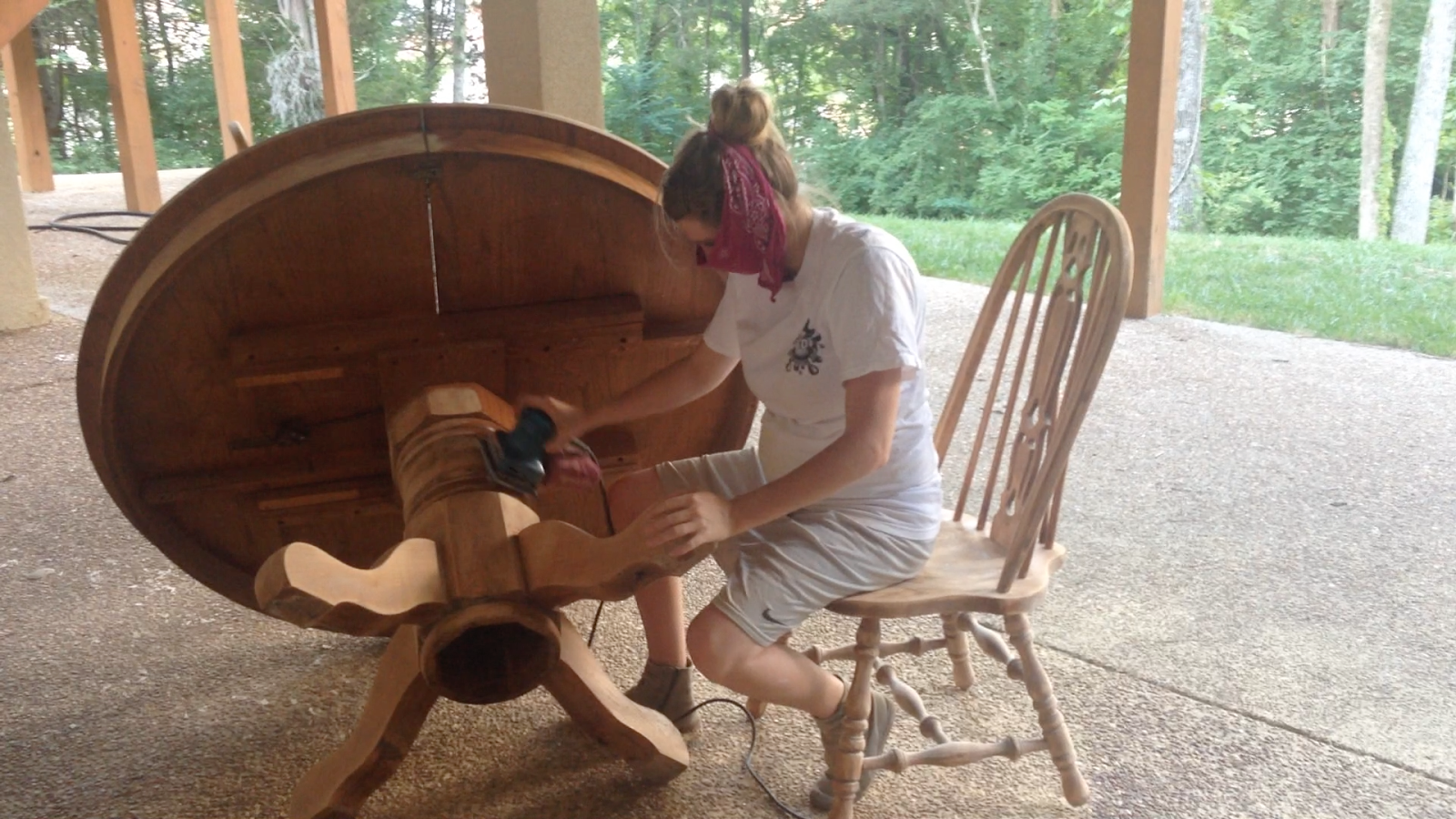I am in total "Nesting" mode right now. I have been trying to get everything prepared for the arrival of our little boy! My first project was the kitchen table. I wanted to change things up a little. Plus, the original finish was chipping off and it kinda hurt your bum when you would sit down....Sooo Ben and I said it was time to give this kitchen table a makeover.
{Chairs Before}
{After Sanding}

I used an 80 grit sand paper over every section of the chair. After I had finished that, I moved to a 150 grit sand paper to finish off any rough edges (I would suggest going to a 180 or higher for a very smooth finish). I did this same thing for all the chair and table. I used an electric sander for most of the chair and a hand sander for the harder to reach areas.
My makeshift mask which helped the excess from the chairs not even up in my nose and mouth. It worked perfectly... although it did make it extremely hot.
{Table Before}
I sanded the top and bottom of the table multiple times to make sure all the old finish was off. I wish I would have sanded the top of the table a bit more. There was still some left over finish from the original table, which made staining more difficult. So make sure you get ALL the old finish off in order to have an easier time staining.
{First coat of stain}

After several coats of stain
After the wood was to the darkness I wanted, I applied Minwax Polyurethane to seal and protect the wood. You will want to use a brush that is specifically made to handle polyurethane. After you have applied the polyurethane make sure the table is completely dry before you start using the table.
Wal-ah you're finished! Pat yourself on the back. I know I did after I was finished. This was a long process... but totally worth it in the end! I am so happy with the way the table turned out.
{BEFORE}
{AFTER}
I painted the table legs an off white and the chairs a Polaris Blue. I am really happy with the way the table as a whole turned out. It was totally something that the kitchen needed to feel finished.
{Finished Product}















